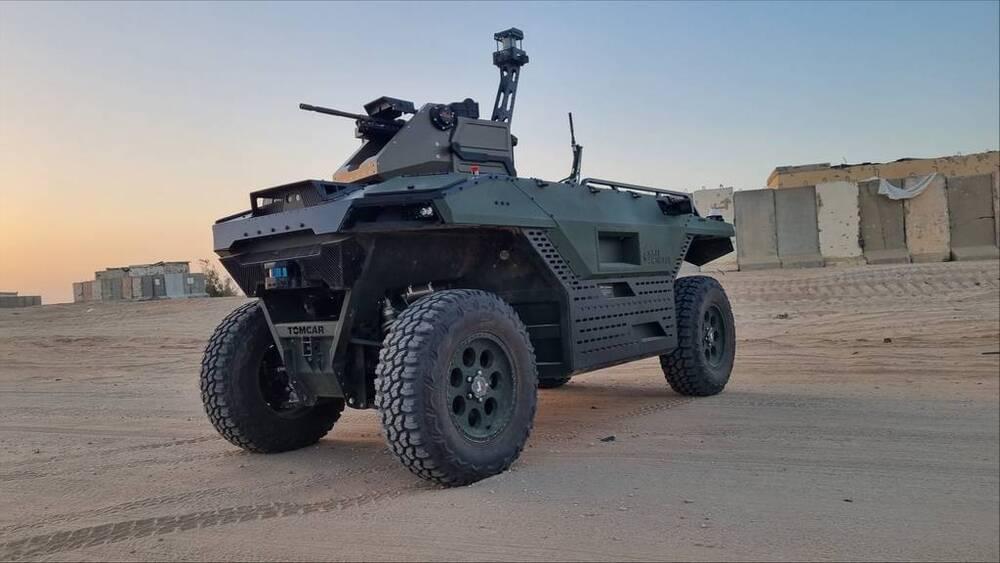The billionaires’ race to reconfigure death is the latest manifestation of a timeless human fascination.


Sign up for Morning Brew for free today: https://bit.ly/mbadamsomething.
Turns out we’ve been driving on McRoads this entire time.
Check out my Patreon tiers: https://www.patreon.com/adamsomething.
Join my Discord: https://discord.gg/2YcarWsc8S
Images of Barcelona I’ve used:
https://unsplash.com/photos/X6o9QhsxkmM
https://unsplash.com/photos/hVhfqhDYciU
https://unsplash.com/photos/c8vMIaXR784
Thumbnail basis:
https://unsplash.com/photos/2-B9yMEh2mk

In a press statement from the UK government, the work is described as a “world first.” The material is being used as part of a trial, meaning that the UK government will keep a close eye on the newly-laid surface over the coming years to discern whether graphene can be used more widely to increase the durability and lifespan of roads.
The concept has been meticulously tested in labs, now it’s time for a real-world application.

WASHINGTON — Israel Aerospace Industries will debut REX MK II, its newest ground robot set to be fielded to British troops, at DSEI, the London-based defense exhibition, which begins Tuesday. IAI signed a contract with the UK in the second quarter of the calendar year and has sold the vehicle to other European countries, Rani Avni, IAI’s deputy general manager for robotics and autonomous systems, told Defense News in a Sept. 12 interview ahead of the show. He declined to identify the other countries.
Israeli defense company unveils its latest ground robot at DSEI as market for light robotic combat vehicles heats up in the European theater.

Israeli scientists are harnessing the “destructive” qualities of allergy-causing cells, as part of a bold attempt to pioneer a new immunotherapy for fighting cancer. A research team from Tel Aviv University has found that eosinophils, white blood cells that induce allergies, significantly reduce the growth of human tumors in vitro, and mouse tumors in the body. Nine days after mice were injected with eosinophils, the overall size of tumors per mouse averaged half that of mice who weren’t injected.
Puncture-proof tires have been an intriguing concept for many years. Tire maker, Michelin, has been working on it since 2005 and after more than a decade of work, it is now closer to reality. The company took its puncture-proof tires for a spin for the first time, on an electric vehicle, in line with the company’s goals of being more sustainable in the future.
More than three billion tires are produced annually around the world. Once beyond their lifetime, these tires usually end up in landfills. They are also at risk of catching fire and releasing toxic fumes into the atmosphere. Like with other things manmade, one way of making tires more eco-friendly is to make them out of naturally occurring material. The second is to reduce instances that cause wear and tear and render the tires useless. French tire manufacturer, Michelin, is using both these approaches to make its tires more ‘green’ in the future.
Through its Vision Concept, the company wants to make tires that are airless, rechargeable, connected, and sustainable. The Unique Punctureproof TIre System (UPTIS) is the airless tire that, thanks, to its unique design, does not require air filling and, never gets punctured either.
By Harold Katcher.
The book The Illusion of Knowledge, by Harold Katcher, was launched on September 4th 2021 at Book Passage Ferry Building, San Francisco/CA. The book was published by NTZ, a publisher specialized on the rejuvenation field.
The book can be cound on Amazon:
NTZ’s website: https://www.ntzplural.com.
#rejuvenation #aging #science #health #biology #HaroldKatcher #E5 #books #antiaging

Above the atmosphere is space. It’s called that because it has far fewer molecules, with lots of empty space between them.
Have you ever wondered what it would be like to travel to outer space — and then keep going? What would you find? Scientists like me are able to explain a lot of what you’d see. But there are some things we don’t know yet, like whether space just goes on forever.
Planets, stars, and galaxies.
Crypto currency, fast grants, publishing sucess and failures, intellectual property, all good.
Around $26 million in grant funding has just been made available for scientific research that can improve our understanding and control of human aging thanks to the donations of supporters such as Vitalik Buterin. Will this launch solve aging? The grants, known as Impetus Grants, are specifically designed to have immediate impact. Scientists can request up to $500,000, and decisions will be made within three weeks.
Impetus Grants exemplify the increasing crossover between the blockchain and cryptocurrency communities and the longevity community. The founding donor was Juan Benet of Filecoin, and he was joined by Mt. Gox creator and Stellar co-founder Jed McCaleb. Well known longevity founder and cryptocurrency pioneer Vitalik Buterin has also donated around $5 million dollars worth of Ethereum, a cryptocurrency which he helped to create.
Impetus Grants are a project of The Longevity Apprenticeship managed by Martin Borch Jensen, the chief scientific officer of Gordian Biotechnology. Gordian claims to have created the first in vivo therapeutic screening platform to radically improve drug development for complex diseases of aging.
This style of funding was inspired by COVID-19 Fast Grants, which were designed to be “faster sources of emergency science funding during the pandemic.” The first round of those grants were given out within 48 hours, with the review of subsequent applications happening within two weeks.

No Man’s Sky
Researchers have created what they say is the largest computer simulation of the universe, and have made the data available for anyone to download for free.
An international team associated with the Center for Computational Astrophysics created the virtual universe using ATERUI II, the world’s most powerful astronomical supercomputer, according to a press release by the organization. Dubbed Uchuu (the Japanese word for “outer space”), the simulation contains a staggering 2.1 trillion particles spanning 9.6 billion virtual light-years. That’s big. Real big.